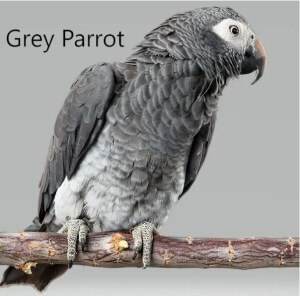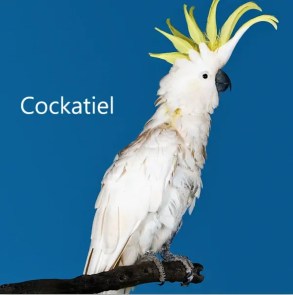Should I have My Bird’s Wings Clipped?
The purpose for wing clipping is to prevent sustained upward flight. When birds have their wings clipped, it should be done just to the amount required to prevent them from flying upwards out of reach and yet still allow controlled, soft landings. A good rule of thumb is that they are able to flutter down to the floor from shoulder height over a distance of less than 10-15 feet.
Reasons for wing clipping include prevention of loss (e.g., flying away outdoors) or to prevent them from accessing areas of the house that are unsafe. Trimming the wings can also be beneficial for focusing the bird’s attentions on the owner during the training or diet conversion exercises.
Why Wing Clipping May Not Be a Good Idea
There are also good reasons for NOT trimming wings. These include birds that have disabilities that already make flight, climbing, or perching difficult (e.g., permanent disfigurement of the beak, legs, or feet). Also, birds that are obese should be trimmed conservatively, if at all, since they will be at higher risk for hard falls and because flight can be of benefit for exercising and reducing weight.
Also, young birds, particularly those of species that naturally have small wings and heavy bodies (e.g., grey parrots and poicephalids), should have their wings trimmed very conservatively, if at all. There can be serious behavioral and health repercussions in such birds if trimmed too aggressively at the age when they are learning to fly, climb, and developing their coordination.
What if I Don’t Trim My Bird’s Wings?
If you choose not to trim your bird’s wings then you must be prepared to spend time training your bird to return to you on command. This is called “Recall Training” and is vital for recovering your bird if it flies away outdoors and for controlling your bird when it is flying loose in the house.
Recall training is a series of “baby steps” to teach your bird to come when called. The first step is to convert your bird’s diet to a basis of formulated pellets and vegetables. With highly desired items, such as seeds, removed from the freely available diet, the bird will be more interested in coming to you for a treat. The rewards should be very small and easily consumed in less than 10 seconds.
Next, you present the reward with your outstretched hand-preferably with your hand flat and the palm up. The food can be held next to your hand or left in the palm or fingers. The first goal is for the bird to take the food from your hand while standing on a perch. As the bird takes the food, give your recall command. It can be words, a whistle, or a clicker. The sound should be clear and easy to reproduce loudly since you may someday be using it outdoors to get your bird’s attention when it is far away from you. The command or signal must be given every time the bird does what you want but not given when it is not doing what you want.
After mastering taking food from you while on a perch, the next step is stepping onto your hand. From there the goal is a short hop to your hand, followed by short flights to your hand, and finally, flying across the room or the house to your hand.
Please check out the training resources listed at the end of this page for more details on training. Remember, also, to have your bird microchipped just in case they should ever get lost.
How are Bird Wings Clipped?
The outer 10 feathers of each wing, called the primaries, are the source of thrust for flight. The remainder of the wing flight feathers provide most of the lift that keeps the bird in the air.
You could think of the primaries as the “propellers”. By reducing the size of those propellers, we will still have a bird that can flutter and glide downward but it won’t be able to climb very well. The wingtips also exert some directional control, simply because they generate thrust. Therefore, it’s important to keep wing trims reasonably symmetric. Otherwise, the bird will tend to spin in flight.
Also, keep in mind that the ratio of a bird’s weight to wing surface area is important. It makes common sense that a heavy object needs more “parachute” than a lighter object. So a heavy bird with short wings (e.g., a grey parrot) should be trimmed less than a bird with larger wings and a lighter body (e.g., a cockatiel).
Feathers are trimmed to a consistent length. The flight feathers each have overlying “covert” feathers that cover the base of the feather on the top and bottom side of the wing. The upper coverts (top side of the wing) are longer than the coverts on the lower side. For this reason, we always use the upper coverts as our guide for trims.
The feathers are cut at about 1 cm (approximately ½“) out from the tip of the upper covert. Cutting closer than this can create problems when the bird molts. Basically, the newly emerging feathers will have less protection and can be broken and bleed more easily. We vary the extent of a wing trim by how many feathers we trim. The exact number varies by species, stage of development (age), and other individual health factors. Remember that it is always easy to take more feathers but very difficult to replace them once cut. Therefore, start out cutting fewer feathers, test the bird’s ability to fly, and then take more if necessary. Here are some basic guidelines for trimming:
| GUIDELINES FOR TRIMMING WINGS | ||||||
| Please read the text here for details on how to safely trim wings. These are GUIDELINES only. It is recommended that you start with a low number, test your bird’s flight, and then trim more only if necessary. It is very important that you discuss wing clipping with your veterinarian and establish a method that is functional, safe and aesthetically appealing for you and your bird. | ||||||
|


Can I clip the wings myself?
Yes, but care must be taken and it is advised that you have your veterinarian show you exactly how to clip and which feathers to cut. Always be mindful that new pin or blood feathers will bleed quite badly if accidentally cut. You may ask your veterinarian to do the wing clipping during regular health check-ups.
How often do I need to clip my bird’s wings?
Wings need to be clipped again 6 – 10 weeks after the start of a molt cycle as new feathers grow back. It is advised to constantly check the wings of your pet since even a couple of new feathers in the right place can dramatically improve their ability to fly. NEVER assume your bird cannot fly. ALWAYS check it in the safety of your home over a carpeted or cushioned area.


